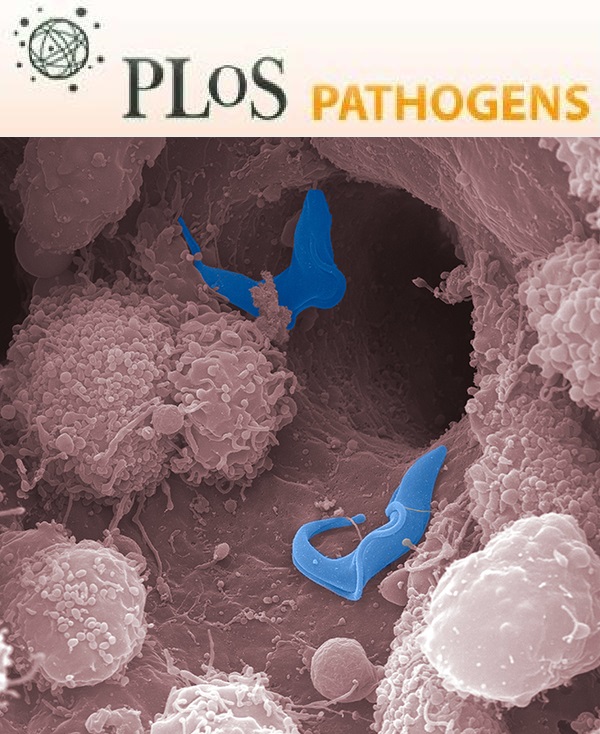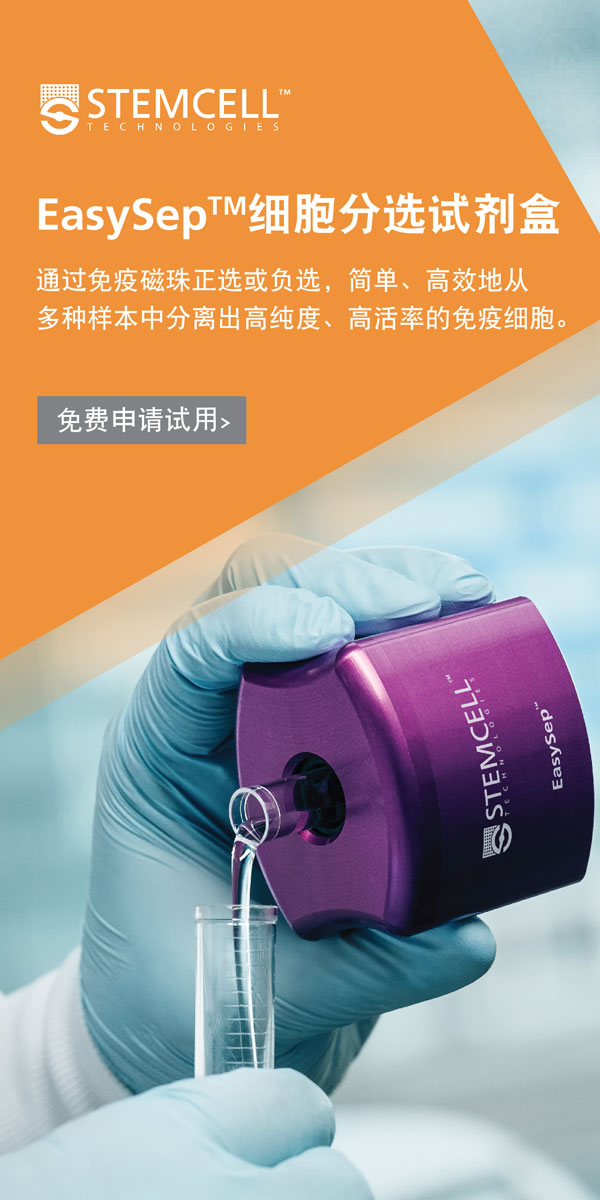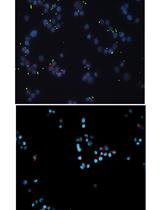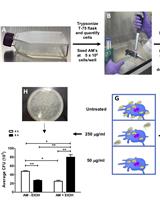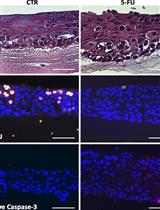- EN - English
- CN - 中文
Phagolysosomal Trafficking Assay
吞噬溶酶体的胞内转运分析
发布: 2014年07月05日第4卷第13期 DOI: 10.21769/BioProtoc.1163 浏览次数: 17111
评审: Hong-guang XiaKanika GeraAnonymous reviewer(s)
Abstract
Phagolysosomal trafficking is an important innate defense pathway that clears microbes by delivering them to lysosomes, the degradative compartment of the cell. Mycobacterium tuberculosis (Mtb), the causative agent of tuberculosis, subverts this host defense mechanism by arresting maturation of the phagosome. The ability of Mtb to arrest its delivery to the lysosome can be demonstrated by the prolonged co-localization of bacteria containing phagosomes/vacuole with early phagosomal markers [such as, Ras- related proteins in the brain 5 (Rab5) and Transferrin receptor (TfR)], and a failure to acquire late phagosomal and lysosomal markers (such as Rab7 and LAMP1) (Deretic and Fratti, 1999, Mehra et al., 2013). Here, a protocol is outlined for infection of macrophages with mycobacterial species like pathogenic Mtb, vaccine strain Mycobacterium bovis- bacillus Calmatte- Guérin (BCG) and rapidly dividing non-pathogenic Mycobacterium smegmatis (Msmeg), followed by indirect-immunofluorescence microscopy to visualize host vacuolar markers. Thereafter, automated quantification of degree of co-localization between mycobacteria and host vacuolar markers like TfR and LAMP1 is done by processing the binary images of bacteria using mathematical tools. This results in quantification of the mean fluorescence intensity (MFI) of these host markers directly around the bacteria/bacterial clusters with increased sensitivity relative to when done manually. By manipulating host or pathogen, this assay can be used to evaluate host or bacterial determinants of intracellular trafficking. The basic method can be applied to studying trafficking of other bacteria or particles like beads, although the kinetics of infection and phagosome maturation will depend upon the phagocytic cargo. The mathematical analysis tools are available in many standard imaging analysis programs. However, any adaption for similar analysis should be confirmed by the individual user with their imaging and analysis platform.
Keywords: Macrophage infections (巨噬细胞的感染)Materials and Reagents
Note: All work with live Mtb must be performed in a Biosafety Level 3 (BSL3) facility according to institutional standards of practice.
- Macrophages, either primary macrophages, such as C57BL/6 bone marrow-derived macrophages (BMDMs) or a macrophage cell line (such as RAW264.7)
Note: BMDMs can be isolated as described (Banaiee et al. 2006; Nagabhushanam et el., 2013). RAW264.7 cells can be purchased from ATCC (ATCC, catalog number: TIB-71 ). - L929 cells (ATCC, catalog number: CCL-1 )
- Dulbecco’s Modified Eagle Medium (DMEM) (Life Technologies, Gibco®, catalog number: 11965 )
- Fetal Bovine Serum (FBS) (heat inactivated) (Life Technologies, Gibco®, catalog number: 10082147 )
- 1 M HEPES solution (Life Technologies, Gibco®, catalog number: 15630-056 )
- 200 mM L-glutamine (Life Technologies, Gibco®, catalog number: 25030-081 )
- Penicillin-Streptomycin solution (10,000 U/ml) (Life Technologies, Gibco®, catalog number: 15140-122 )
- Phosphate buffered saline (PBS) (Life Technologies, Gibco®, catalog number: 10010-023 )
- Eight well Permanox chamber slide (Thermo Fisher Scientific, Nunc Lab-Tek Chamber Slides, catalog number: 177445 )
- Eight well chamber coverglass (Thermo Fisher Scientific, Nunc Lab-Tek Chamber coverglass, catalog number: 155411 )
- Paraformaldehyde (PFA) (Sigma-Aldrich, catalog number: P6148 )
- Bovine serum albumin (BSA) (fraction V) (Thermo Fisher Scientific, catalog number: BP1600 )
- Detergents: Saponin (Sigma-Aldrich, catalog number: 47036 ), Triton- X100 (Sigma-Aldrich, catalog number: X100) and/or Tween-20 (Thermo Fisher Scientific, catalog number: BP337 )
- Primary antibodies to detect host cellular markers
For example, recycling endosomes and early phagosomes can be labeled with mouse anti-transferrin receptor (anti-TfR) antibody (Life Technologies, InvitrogenTM, catalog number: 136800 ); Late endosomes and lysosomes stain with rabbit anti-LAMP1 antibody (Abcam, catalog number: 24170 ).
Notes:- If Mtb infected slides are to be removed from the BSL3 for imaging, the antibodies chosen need to work after fixation cum sterilization methods like long fixation as mentioned below in step A11, note a. Some of the commercially available antibodies may loose recognition or weakly recognize their epitopes after long fixation.
- It is critical that polyclonal antibodies were not raised in animals given Freund’s adjuvant, as then they will directly recognize Mtb in addition to whatever cellular marker they were raised against. All antibodies should be tested to verify that they do not directly recognize Mtb.
- If Mtb infected slides are to be removed from the BSL3 for imaging, the antibodies chosen need to work after fixation cum sterilization methods like long fixation as mentioned below in step A11, note a. Some of the commercially available antibodies may loose recognition or weakly recognize their epitopes after long fixation.
- Secondary antibodies for immunofluorescence
Secondary antibodies are available against different species and in different colors and user may choose depending on the primary antibodies being used. They are adsorbed against multiple species to minimize species cross reactivity during immunostaining. For example, Goat anti- mouse Alexa 594 (Life Technologies, Molecular Probes®, catalog number: A11032) and Goat anti-rabbit Alexa 594 (Life Technologies, Molecular Probes®, catalog number: A11037 ).
Of note, Mtb exhibits autofluorescence, with an emission maximum at 475 nm when excited at 405 nm, and thus are visualized by many DAPI filters (Patiño et al., 2008). Therefore, secondary antibodies should be chosen that do not fluoresce in this range. - Lysotracker Red DND-99 (1 mM stock in DMSO) (Life Technologies, Molecular Probes®, catalog number: L-7528 )
Note: Lysotracker dyes are available in different colors and one may choose depending on the color requirement. - Dextran (TexasRed, 10,000 MW, Lysine fixable) (Life Technologies, Molecular Probes®, catalog number: D-1863 ) (make 25 mg/ml stock in PBS, stored in dark in -20 °C)
Note: Dextran is available in different colors and molecular weights and again one may choose depending on requirement and desired goals of the experiment. - Vectashield mounting media (Vector Laboratories, catalog number: H-1000 )
- Middle brook 7H9 broth (Difco, catalog number: 271310 )
- Albumin-dextrose-catalase (ADC) (BD, catalog number: 212352 )
- Oleic-albumin-dextrose-catalase (OADC) (BD, catalog number: 212351 )
- Nail polish (clear)
- Immersion oil (Microscope 50CC Immersion oil) (e.g. Nikon Corporation, catalog number: IB-MA-MXA20234 )
- 4% paraformaldehyde solution in PBS (see Recipes)
- DMEM complete media (see Recipes)
- DMEM/L929 complete media (see Recipes)
- L-Cell conditioned media (see Recipes)
- 2% BSA in PBS containing 0.1% saponin (see Recipes)
- 2% BSA in PBS containing 0.1% triton X-100 (see Recipes)
- 7H9 complete media (see Recipes)
- Fixative (see Recipes)
- Blocking solution (see Recipes)
Equipment
- Spectrophotometer (measure the OD600 i.e. optical density at wavelength of 600 nm of the mycobacterial cultures using cuvettes)
- Disposable 1.5 ml cuvettes (Perfector Scientific, catalog number: 9003 )
- Disposable sterile filter system (500 ml, 0.22 µm pore size) (Corning, catalog number: 430758 )
- 30 ml square media bottles (Thermo Fisher Scientific, Nalgene, catalog number: NE/2019-0030 )
- 50 ml, 15 ml falcon tubes (with plug seal caps) (Corning, catalog numbers: 430052 and 430290 )
- Coverslip (22 x 50 mm, thickness#1, 0.13-0.17 mm) (Thermo Fisher Scientific, catalog number: 12-545C )
- Centrifuge with swinging bucket rotor for spinning down bacterial cultures (for example, Beckman Coulter, model: Allegra X-15R ; bench top centrifuge with SX4750 rotor)
Note: Mtb cultures should be handled in BSL3 facility according to institutional standards of practice. - 37 °C shaker incubator with aerosol containment units for Mtb liquid cultures
- Beckman aerosolve canisters for centrifuging mycobacterial cultures in falcon tubes (e.g. Beckman Coulter, catalog number: BK359232 )
- Multiwell-Plate Carrier Covers (e.g. Beckman Coulter, more on this link https://www.beckmancoulter.com/wsrportal/techdocs?docname=GX-TB-012)
- 37 °C shaker incubator with aerosol containment units for Mtb liquid cultures
- Epifluorescence microscope [e.g. Nikon Eclipse TiE/B model equipped with 60x; Plan-Apochromat, NA 1.4 oil immersion objective, Ti Z drive, high resolution monochrome charge-coupled device (CCD) digital camera; Photometric Cool SNAP HQ2 and appropriate filter sets for DAPI, FITC and TexasRed channel]
Software
- Nikon Imaging Software-Elements Advanced Research (NIS-Elements AR) version 3.2 software with deconvolution module
- Graph Pad Prism software
Procedure
文章信息
版权信息
© 2014 The Authors; exclusive licensee Bio-protocol LLC.
如何引用
Readers should cite both the Bio-protocol article and the original research article where this protocol was used:
- Mehra, A. (2014). Phagolysosomal Trafficking Assay . Bio-protocol 4(13): e1163. DOI: 10.21769/BioProtoc.1163.
- Mehra, A., Zahra, A., Thompson, V., Sirisaengtaksin, N., Wells, A., Porto, M., Koster, S., Penberthy, K., Kubota, Y., Dricot, A., Rogan, D., Vidal, M., Hill, D. E., Bean, A. J. and Philips, J. A. (2013). Mycobacterium tuberculosis type VII secreted effector EsxH targets host ESCRT to impair trafficking. PLoS Pathog 9(10): e1003734.
分类
免疫学 > 免疫细胞功能 > 巨噬细胞
细胞生物学 > 细胞成像 > 荧光
微生物学 > 微生物-宿主相互作用 > 体外实验模型 > 细胞系
您对这篇实验方法有问题吗?
在此处发布您的问题,我们将邀请本文作者来回答。同时,我们会将您的问题发布到Bio-protocol Exchange,以便寻求社区成员的帮助。
Share
Bluesky
X
Copy link



